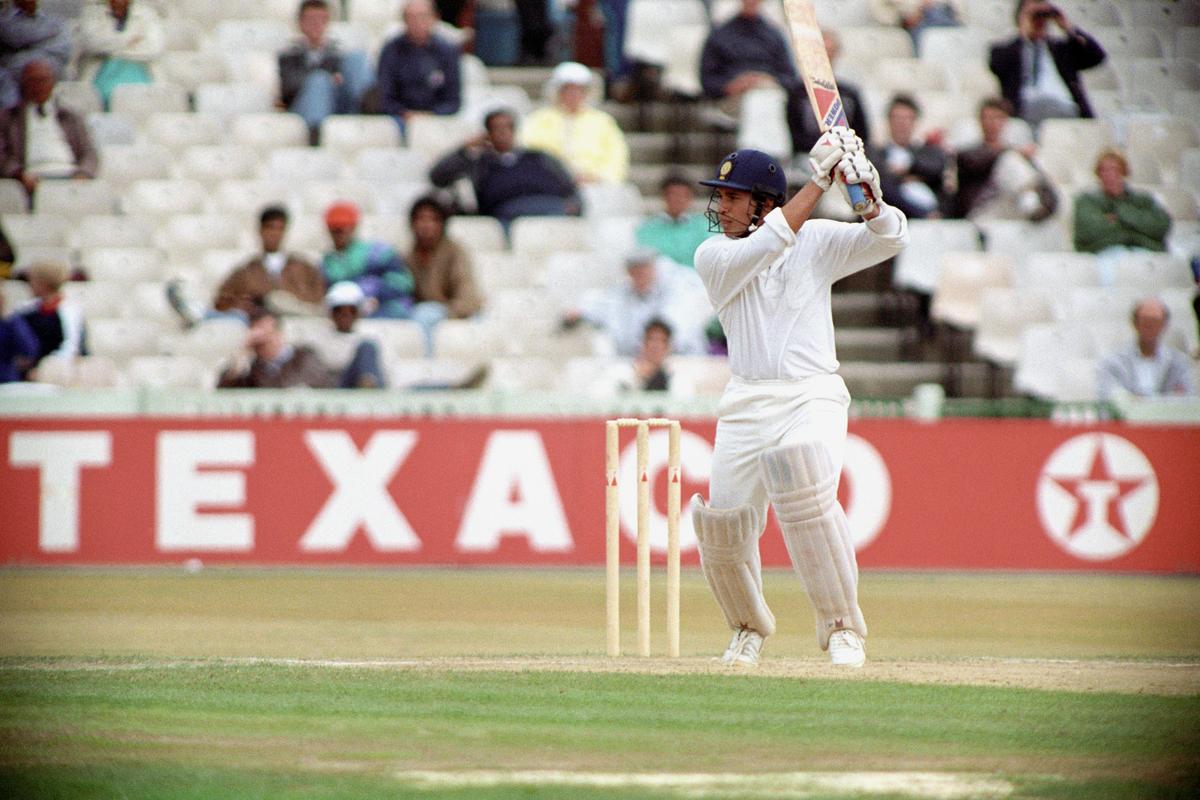Tryst with history as India seeks to break Old Trafford jinx

Until a fortnight ago, India hadn’t won a Test match at Edgbaston. Shubman Gill’s men created history in Birmingham with their commanding 336-run win in the second Test, correcting one anomaly. This week, they will get a chance to set another record straight at Old Trafford, a ground where nine previous Tests have failed to yield a victory.
For various reasons, India have played a mere two Tests in Manchester in the preceding 35 years, the last of them 11 years ago. They were scheduled to play the fifth and final Test here in 2021 until the outbreak of Covid-19 in the ranks and the fear of what it might lead to forced Virat Kohli’s men to fly out to Dubai holding a 2-1 lead. When India returned 12 months later, the Test was moved to Birmingham. By then, Rohit Sharma had replaced Kohli as the all-format captain but couldn’t play the ‘decider’ due to Covid. In his first Test as stand-in skipper, Jasprit Bumrah oversaw a crushing seven-wicket loss with England hunting down a target of 378 with consummate ease, thanks to centuries from Joe Root and Jonny Bairstow as the hosts provided an early example of the ‘Bazball’ style of play that has since become their USP.
The worst of India’s four losses dates to July 1952 when Vijay Hazare’s side was battered by an innings and 207 runs by an English outfit under Len Hutton. The skipper’s century headlined an England tally of 347 for nine declared, after which India had two disastrous outings with the bat. In the first innings, with the fiery Fred Trueman (8/31) scything through their line-up, the visitors were shot out for 58 – a dubious record that went out the window in 1974 when Ajit Wadekar and his men were skittled for 42 at Lord’s by Chris Old and Geoff Arnold. In the second innings, Alec Bedser and Tony Lock complemented Trueman by sharing nine wickets, India collapsing in a heap for 82 with Hemu Adhikari’s 27 the highest score by an Indian across the two innings. In all, the double-figure mark was breached just five times and there were six ducks.
India’s last Test here was in August 2014, marked by further forgettable batting displays that netted them 152 and 161, which ensured that England’s 367 was enough to drive them to an innings-and-54-run win. That was the series during which Kohli struggled to buy a run, aggregating just 134 in ten innings with a combination of James Anderson and the corridor of uncertainty his perennial bugbear. Kohli perished to the English swing king for 0 and 7, his travails mirroring that of his team’s as they crashed and burned to a 1-3 hammering.
Big disappointment
The captain during that unedifying campaign was Mahendra Singh Dhoni, who was also at the helm when India wiped the floor 0-4 on the preceding tour in 2011 despite Rahul Dravid amassing 461 runs, studded by three centuries. That was just a few months before Dhoni abruptly announced his retirement from Test cricket during the tour of Australia over the winter, though the innings loss to Alastair Cook’s men in 2014 wouldn’t be the Jharkhandi’s Old Trafford swansong.
Dhoni returned to Manchester for the 2019 50-over World Cup, making 1 and an unbeaten 56 in comfortable league wins over Pakistan and West Indies respectively. Then came the big one, the semifinal against New Zealand which spilled over to the reserve day.
When rain halted proceedings on the original match day (July 9), the Kiwis had laboured to 211 for five with Ross Taylor and Tom Latham holding fort. India’s batting had been in roaring form throughout the tournament, propelled by an unprecedented five centuries in a single World Cup by Rohit Sharma. There was belief within the camp that even if New Zealand posted 250, they had the resources to overhaul that total – the depth in the batting was illustrated by Ravindra Jadeja’s presence at No. 8.
At breakfast on the reserve day, Rishabh Pant – interestingly, one of four stumpers in that XI alongside Dhoni, K.L. Rahul and Dinesh Karthik – sought to know Dhoni’s plans for the trip to London, ostensibly for the final. Some of the players intended to make the most of the early finish on the reserve day to drive individually to the English capital. Dhoni is supposed to have told his successor-in-waiting that he’d rather travel by the team bus ‘one last time’, the earliest indication that he was done with international cricket. As it transpired, it wouldn’t be another 13 months until he’d formally announce his retirement through social media.
New Zealand scrambled to 239 for eight on the reserve day when they ran out of time, setting their opponents a challenging target magnified by the overhead conditions that were exactly what Trent Boult, Matt Henry and Lockie Ferguson were praying for. In no time, the cream of the Indian batting, including Rohit and Kohli, were back in the hutch. At 24 for four in 10 overs with Henry breathing fire (he took three of those four wickets), India needed their famed depth to bail them out even if the odds were seriously stacked against them.
Pant and Hardik Pandya ground out 32 apiece but when the left-arm spinner Mitchell Santner accounted for the latter, India were all but out for the count, 92 for six after 30.3 overs. Jadeja’s arrival at the crease brought the last recognised pair together, India needing 148 at more than seven over. Then began an extraordinary counter-attack with Jadeja in the forefront. Where Dhoni was content to play second fiddle and bide his time, the left-hander from Saurashtra cut loose uninhibitedly. There were four fours and as many sixes in his 59-ball 77 which easily dominated the seventh-wicket stand of 116.
The duo had brought the equation down to 32 off 20 when, against the run of play, Jadeja was foxed by a Boult slower delivery and holed out to Kane Williamson, the calmest man on the park. But Dhoni was still around and when Dhoni’s around, there is still hope, isn’t there? It was during this year’s IPL, when Dhoni was 43; how could it not have been there when he was 37, no longer at his peak but still a fearsome force of nature?
Thirty-one were required off the last two overs when Ferguson fronted up for the 49th. Boult, Henry and Santner had all bowled out, Jimmy Neesham would bowl the last over. Dhoni was the master of taking it to the last over and everyone at the ground, all Kiwis included, believed Dhoni would mentally and psychologically stare Neesham down even if 20 were needed off the final six deliveries. It was a question of not getting out to Ferguson; instead, Dhoni went airborne as he scythed the first ball over point for six, after which he patted a yorker back to the bowler.
M.S. Dhoni is caught short of his crease by a Martin Guptill direct hit in the semifinals of the 2019 World Cup.
| Photo Credit:
FILE PHOTO: GETTY IMAGES
The third ball was short, banged into the pitch from wide of the crease, the line impeccable. Dhoni could only bunt it behind square, but he saw an opportunity to come back for the second. He did come back for the second, but fell fractionally short as an extraordinary direct hit, off-balance, from Martin Guptill charging in from the boundary shattered the stumps at the striker’s end. It also shattered Indian hopes and aspirations. Dhoni was run out for an even 50 but no one cared, not least the protagonist himself. There was no applause for a half-century, just the deafening sound of silence while the Kiwis celebrated with gusto. If there was one moment that encapsulated India’s Old Trafford travails, it was that.
Happy memories of the cricket ground that lies just half a mile across from the largest Premiership football stadium of the same name are few and far between, so why not reflect on potentially the most far-reaching of the lot, the first of an incredible 51 Test centuries by the little big man of Indian cricket? Sachin Tendulkar had been dismissed for 88 in Napier in February 1990, caught by future India coach John Wright off Danny Morrison. Had he reached three-figures, he would have become the youngest Test centurion at the time.
Tendulkar wasn’t to be denied his maiden tryst with a hundred six months later. India were in a scrap for survival on the last day of the second Test, stumbling to 183 for six after being set 408 for victory. All the big guns – Ravi Shastri, Navjot Singh, Sanjay Manjrekar, Dilip Vengsarkar, skipper Mohammad Azharuddin and Kapil Dev – had come and gone, and only Kiran More and leggies Anil Kumble and Narendra Hirwani were to come when Tendulkar, batting at No. 6, was joined by No. 8 Manoj Prabhakar. England had nearly two and a half hours to winkle out the last four wickets and they believed if they split this alliance, the end would only be a few deliveries away.
The 17-year-old Tendulkar was in the early 20s at Prabhakar’s arrival. He had shown glimpses of his genius in the first innings with a polished 68 that convinced the English that he was the real deal. But the second innings was a different kettle of fish.

Sachin Tendulkar en route his maiden Test hundred at Old Trafford in 1990.
| Photo Credit:
FILE PHOTO: GETTY IMAGES
The target was beyond India’s reach, their only hope was to grind out a draw but against Devon Malcolm, Angus Fraser, Chris Lewis and veteran off-spinner Eddie Hemmings, that was easier said than done. Despite his tender age and his lack of experience – it was just his ninth Test – Tendulkar instinctively knew that going into a shell was fraught with danger. And so he played his shots, not recklessly or on a song and a prayer, but with assurance and control with a stoic Prabhakar for company. A pushed three to long-off catapulted him past hundred, the thunderous ovation just the first of thousands that would accompany him till his last day as an international cricketer. Not quite ‘Sa-chin, Saaaa-chin’, though there’s no prizes for guessing where the genesis of that chant lies.
